Périgord and Quercy are two beautiful regions situated in the south-west of France, renowned for their indulgent delicacies as well as for their associations with Cyrano de Bergerac and the Cro-Magnon era. However, there is much more to discover: these regions also offer the perfect opportunity to explore castles, meander along rivers, delve into enchanting caves, wander through lush gardens and villages steeped in a thousand years of history.
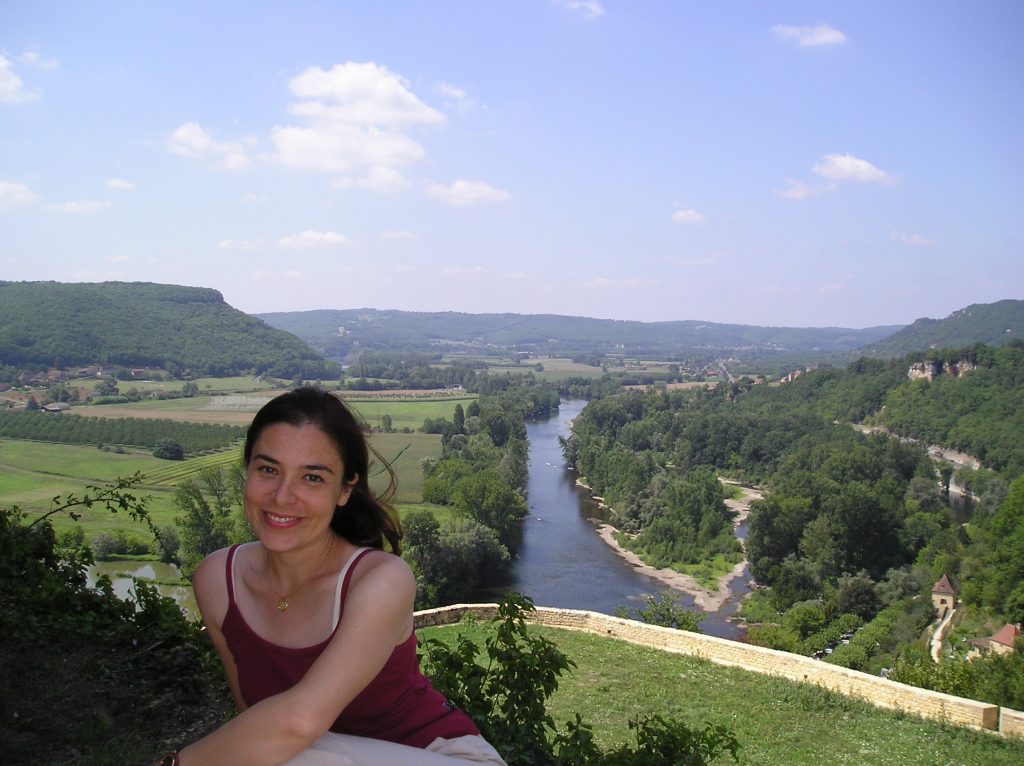
With such enticing prospects, don’t tell me you’re not already itching to go! So, without further ado, let us set forth, suivez le guide. I shall be your companion on a journey spanning ten days, brimming with leisure, nature, culture, history, and delectable gastronomy. Together, we will retrace the itineraries that I have personally explored and tested.
Périgord is customarily divided into four regions, with each region being associated with a specific colour: white, resembling the limestone of the cliffs; green, akin to the dense woods and forests; purple, evoking the wine; and black, symbolic of the truffles that thrive in these areas.
Périgueux
Our first stop is Périgueux, nestled in the heart of White Périgord, constructed upon the remnants of ancient Vesunna.
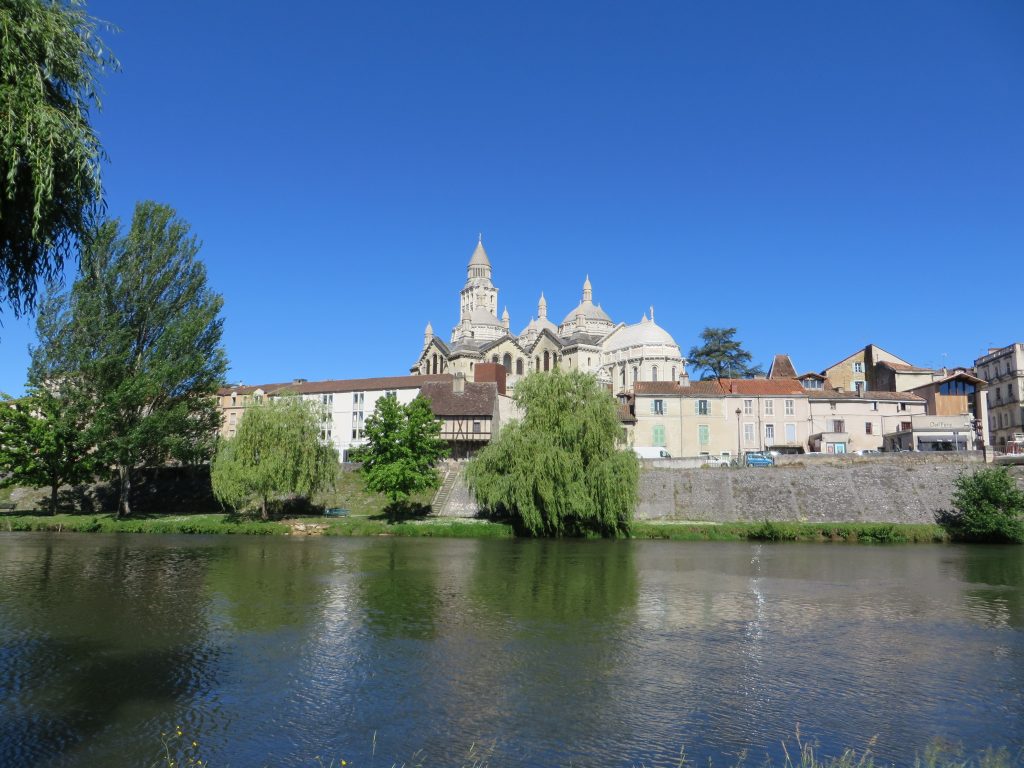
Périgueux is one of those towns that lends itself to be explored like the pages of a history book. The opening chapter awaits at the Musée d’Art et d’Archéologie du Périgord, where we learn about the trials and tribulations of our ancestors, including the Neanderthal ‘Homme de Regourdou‘ and the Homo Sapiens ‘Homme de Chancelade‘. As we turn to subsequent chapters (Musée Gallo-Romain Vesunna, Temple of Vesunna, and Jardins des Arènes), numerous artefacts from the Gallo-Roman era vividly illustrate the daily life of the ancient local population known as the Petrocori. Should we choose to flip the page and wander into the narrow, intricate streets of the city centre, we are instantly transported to the medieval and Renaissance periods.
The city proudly showcases the magnificent Saint-Front Cathedral, a UNESCO World Heritage Site, standing resplendent in white against the sky. Its striking Byzantine-inspired five round domes are reflected in the serene waters of the River Isle, which gracefully embraces the city. The cathedral’s layout takes the form of a Greek cross, reminiscent of St Mark’s in Venice.
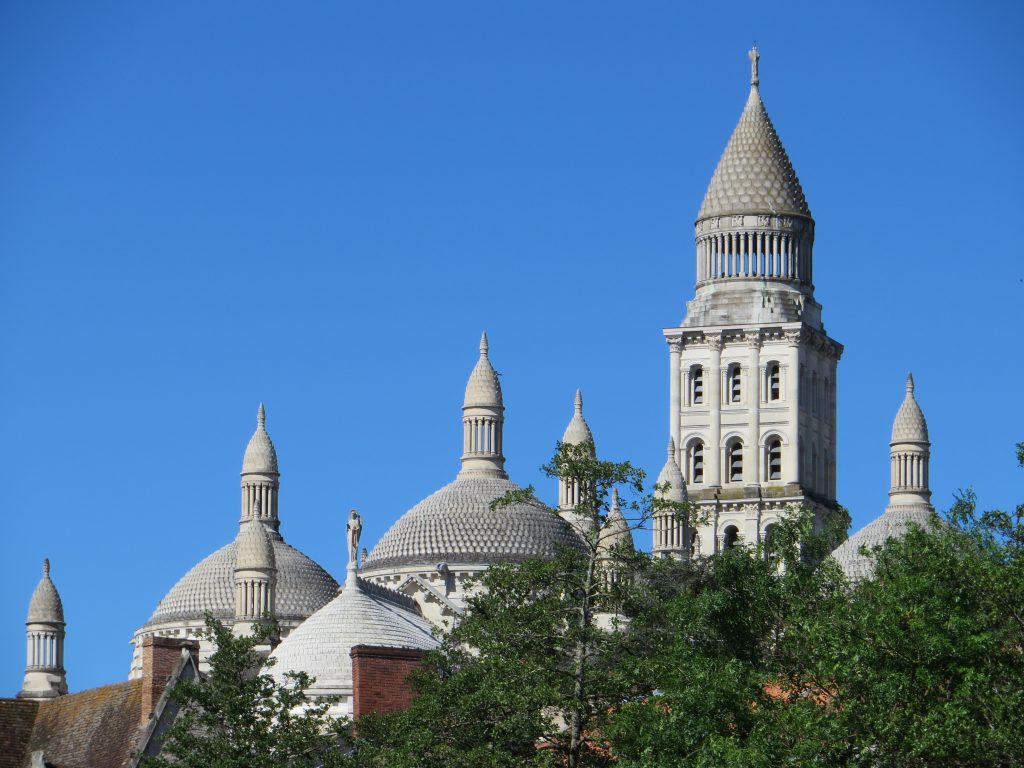
Périgueux, Saint Front
Upon leaving the cathedral, you can readily explore the streets of the old town and indulge in some gastronomic delights on Rue Limogeanne.
Local delicacies encompass a wide array of offerings, including black truffles, Périgord walnuts in their various forms (walnut oil, vinegar, liqueurs, and delectable sweets), renowned cheeses like Cabécou and Trappe d’Echourgnac, exquisite Bergerac wines, confit de canard (duck meat cooked in its own fat), and controversial foie gras.
Cycling
In the afternoon, I highly recommend hiring a bicycle and embarking on a delightful ride along the Voie Verte, a dedicated cycle and pedestrian path that runs alongside the river, meandering past the town and into the picturesque countryside towards Trelissac, approximately 8 kilometres away. As you pedal along this scenic route, you’ll have the opportunity to encounter various wildlife, such as ducks and their adorable ducklings (especially during the spring season), moorhens, herons, and nutrias.
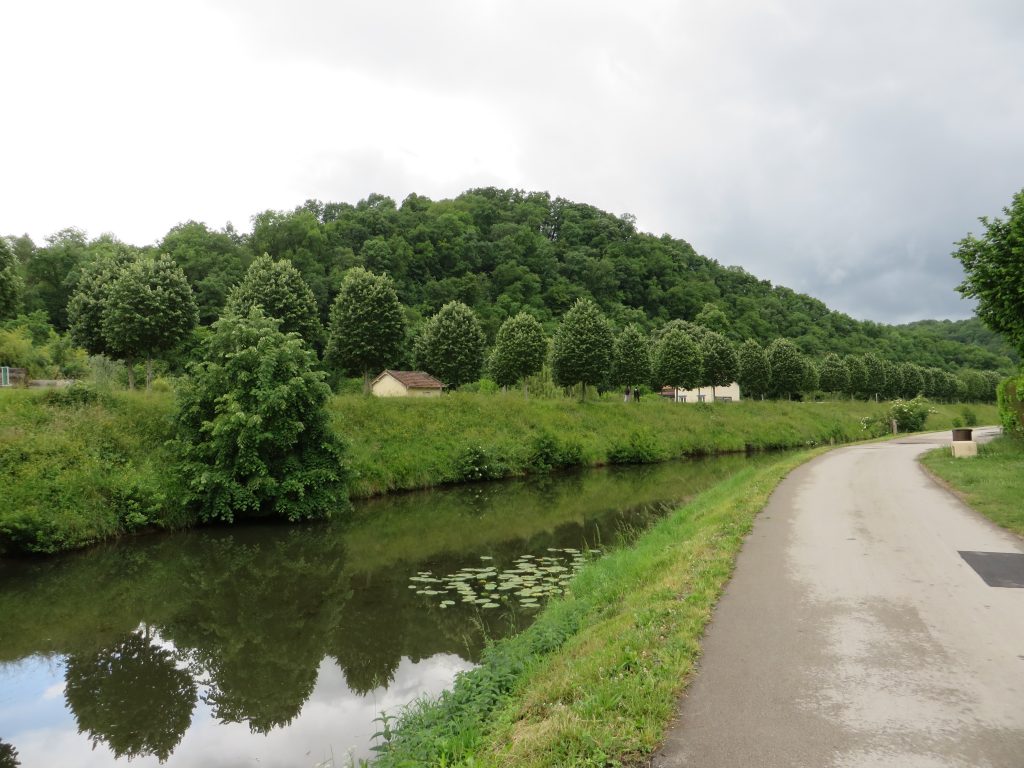
Périgueux, la voie verte
Abbeys, Caves, and Enigmatic Castles in Périgord
Brantôme, located in the heart of Périgord Vert, holds the esteemed status of being its most prominent town. It earned the endearing nickname of “The Little Venice of Périgord” from President R. Poincaré in 1913. While it’s important to take this comparison with a grain of salt, the town’s allure is undeniable. Nestled on a small island, Brantôme is gracefully surrounded by two branches of the river, with charming bridges and footbridges connecting it to the mainland. Its enchanting atmosphere reminiscent of a lagoon town truly captivates visitors.
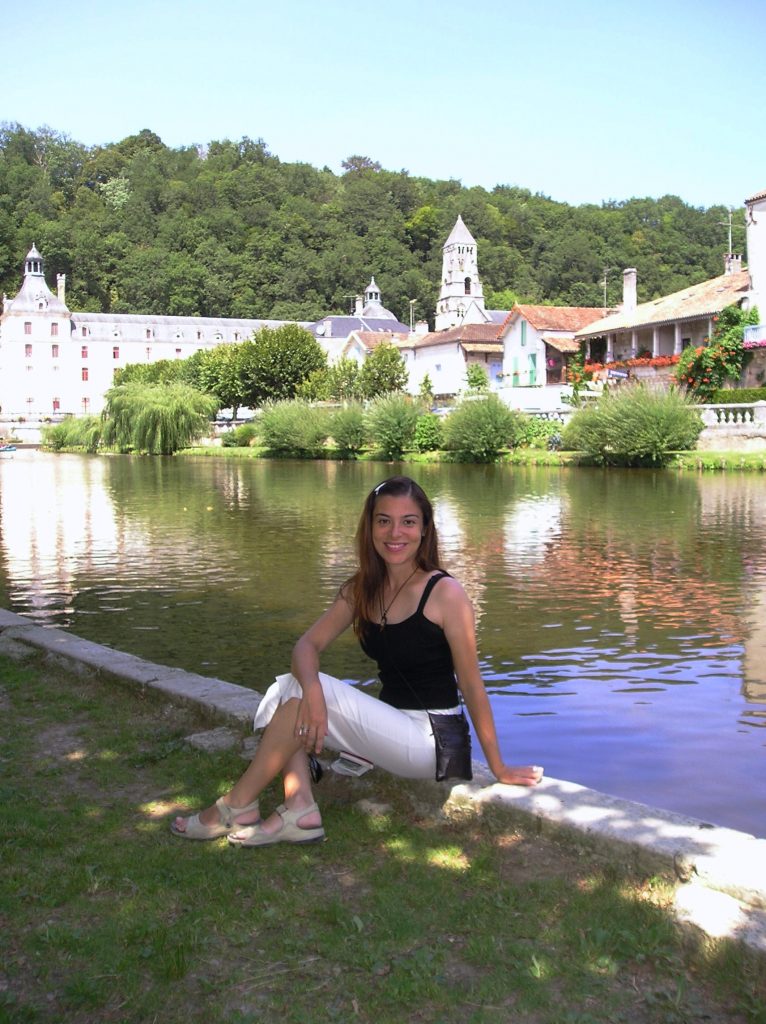
Notably, the Pont Coudé, a unique bridge constructed at a right angle, spans both the Dronne River and one of its canals, offering a picturesque view of the romantic abbey mill, now transformed into a delightful restaurant and charming hotel.
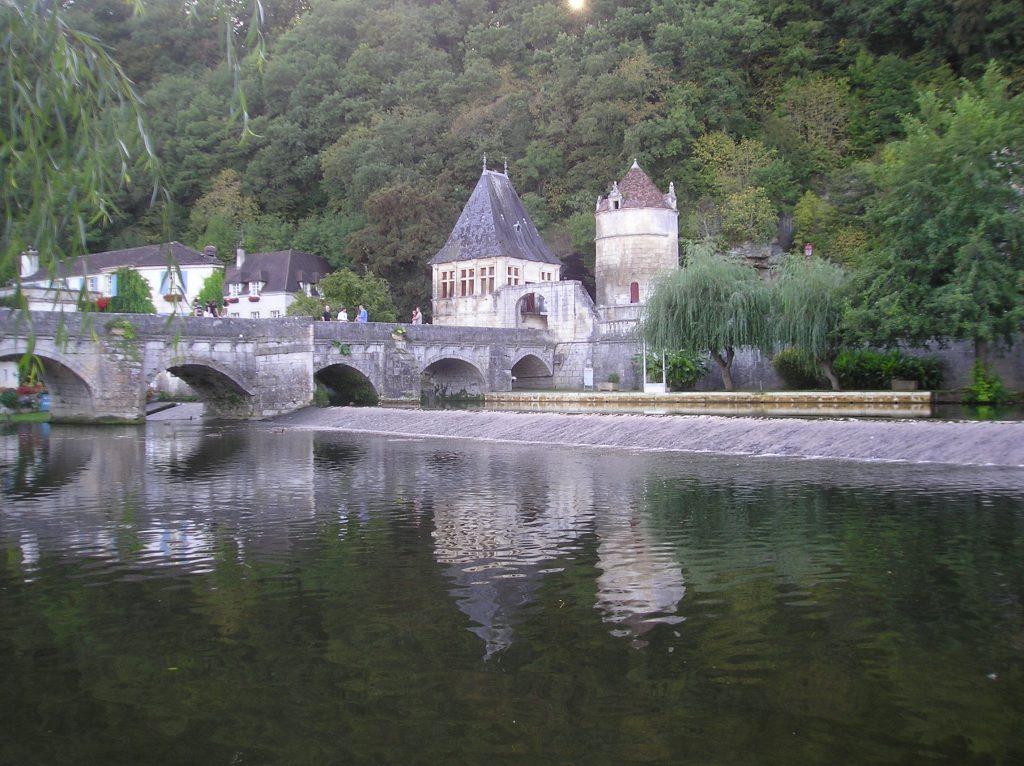
The Abbey
The setting is incredibly picturesque: nestled at the base of a cliff overlooking the river, stands the Benedictine abbey. Legend has it that the abbey was founded by Charlemagne himself. As you venture behind the abbey, you’ll discover a winding troglodytic path stretching over approximately 600 metres. Throughout the centuries, these caves within the cliff have not only served as a sanctuary for those seeking a hermit’s life, but also provided a refuge for Benedictine monks during sieges, allowing them to protect and defend the abbey.
The Cave of the Last Judgment
Make sure not to miss the intriguing Cave of the Last Judgment, adorned with two immense bas-reliefs believed to date back to the 15th or 16th century. This artwork poses a genuine challenge for art historians, as its style and unconventional representation of the crucifixion do not align with the religious and artistic trends of its time. Its mysteries continue to baffle scholars and ignite curiosity.
To complement your visit, I highly recommend taking a mini-cruise departing from Pont Coudé. This scenic cruise, lasting just under an hour, allows you to explore the city and its surroundings, providing a delightful overview of the area.
The Alchemist’s Castle
Nestled amidst lush valleys and rolling hills, the castle of Jumilhac le Grand is a true gem. What immediately captures the visitor’s attention is its stunning slate roof, adorned with a captivating blend of cone-shaped turrets and pyramids, imparting an air of mystery and enchantment to the castle.
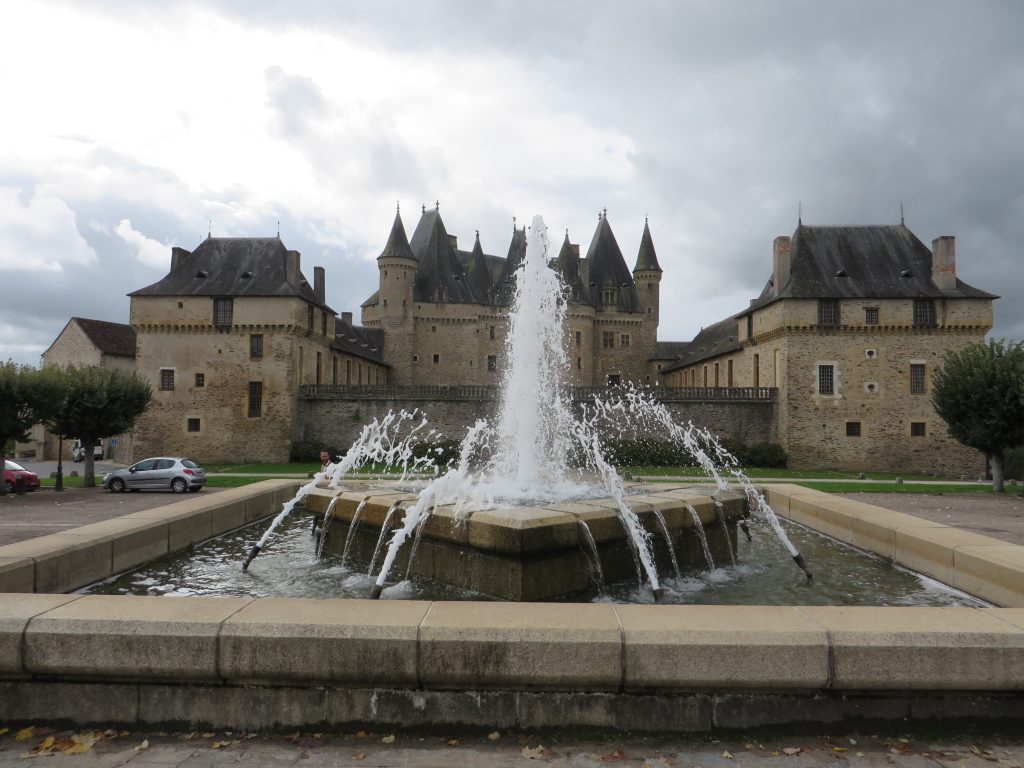
As we approach the square in front of the entrance, the sense of enigma deepens. Ornamental lead pinnacles, depicting peculiar anthropomorphic figures, catch our attention as they grace the roofline.
The mystery unravels during the guided tour, shedding light on the castle’s rich history. Although initially built around 1200, the castle underwent several transformations over the following centuries. Its current appearance owes much to Antoine Chapelle, the esteemed first Count of Jumilhac, who resided there during the late 16th century.
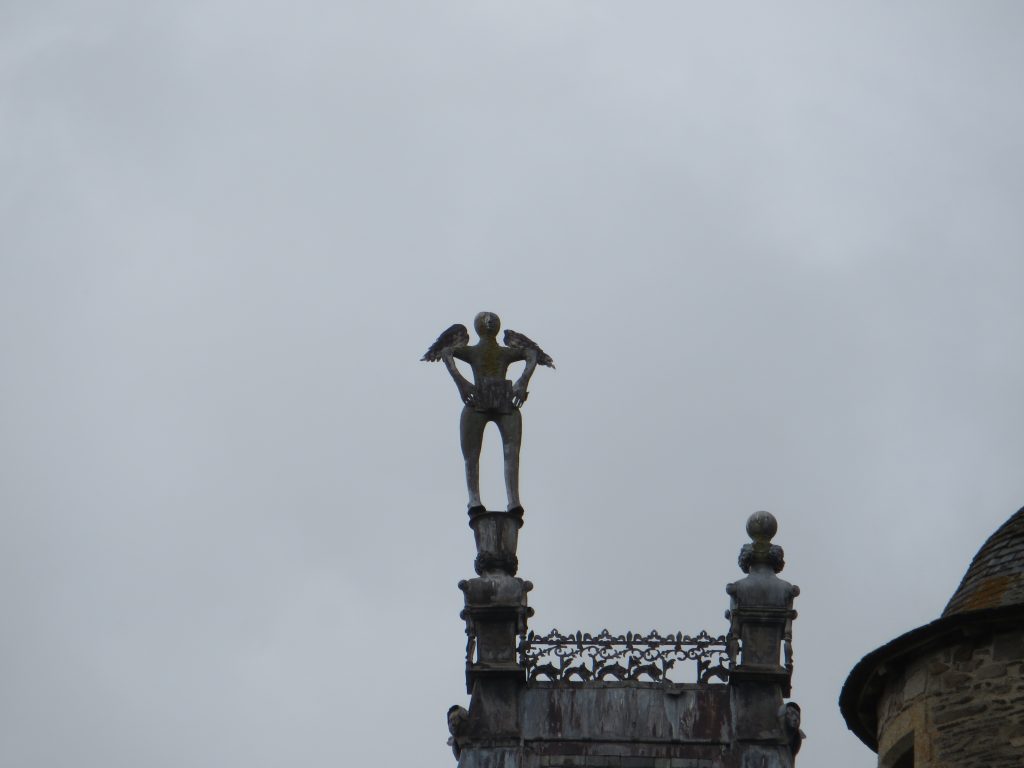
Enigmatic figures
As it turns out, the count himself was an alchemist, eager to leave a lasting imprint of his pursuits within the very structure of the castle. Alongside the decorative elements adorning the roof, the theme of alchemy, with its aspirations of transmuting lead into gold and the quest for the philosopher’s stone, also permeates certain rooms and gardens of the castle.
The legend of the young spinner
Now, shifting to another intriguing tale, a fresco portraying a young spinner resides within one of the castle’s chambers, further fueling a macabre legend. According to the tale, Louise de Hautefort, the wife of the second Count of Jumilhac, was allegedly walled up alive by her jealous husband within one of the castle’s towers. The legend maintains that she endured a harrowing imprisonment lasting a staggering 20 years, during which she occupied her days spinning wool while clandestinely penning love notes to the young servant she had secretly fallen for.
Sarlat, the Capital of Périgord Noir
Sarlat, known as the capital of Périgord Noir, boasts an array of magnificent late Renaissance buildings. What unifies these architectural marvels is the warm yellow ochre hue of the stones used in their construction. On sunny days, the vibrant contrast with the slate grey-black roof tiles is truly striking.
At the heart of Sarlat lies the Place de la Liberté, offering a captivating view of the Gothic bell tower of Saint Sacerdos Cathedral, overlooking the town hall. This bustling square serves as the focal point for the renowned market, attracting visitors, shoppers, and curious onlookers from all corners of the region.
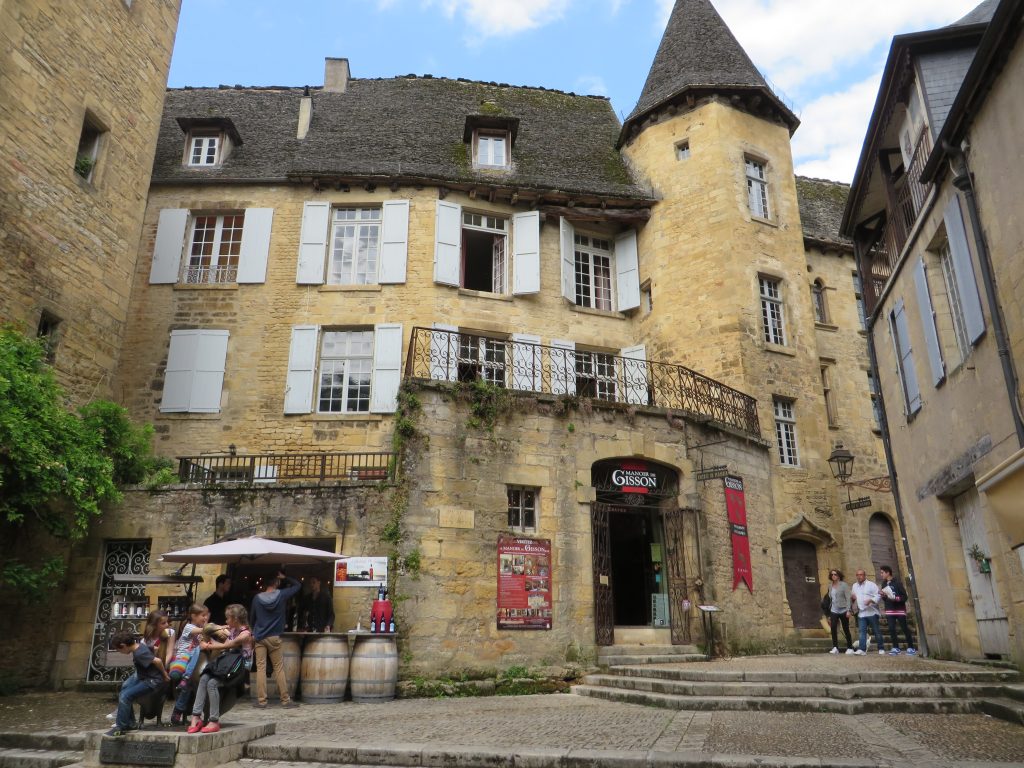
Did you know?
As you stroll along the street leading to the Manoir de Gisson, an elegant edifice of the city, your attention will be drawn to a statue of a boy sitting on a low wall. Although officially titled “Le badaud” or “the passer-by,” the locals of Sarlat cherish the belief that it represents Jacquou le Croquant, the protagonist of Eugène Le Roy’s novel set in the Périgord during the jacqueries, the 17th and 18th-century anti-feudal uprisings.

Lantern of the Dead
But for a truly awe-inspiring view of Sarlat, ascend to the top of the bell tower at Sainte-Marie Church, which now houses a covered market. As you reach the summit via the glass lift, your gaze will be captivated by a distinctive monument. This colossal cylindrical structure, crowned with a cone-shaped roof, stands within the old cemetery. Known as the “lanterne aux morts,” its precise purpose remains a mystery. The prevailing theories suggest that it was erected in the 12th century to honor Saint Bernard, potentially serving as a guiding beacon, akin to a lighthouse, for departed souls. Yet, the puzzle persists, inviting intrigue and speculation.
Canoe Adventures
If there is one place that encapsulates the essence of Périgord Noir, with its breathtaking landscapes, distinct architectural style of houses, abundant castles, and impregnable medieval fortresses, it is unquestionably La Vallée de la Dordogne.
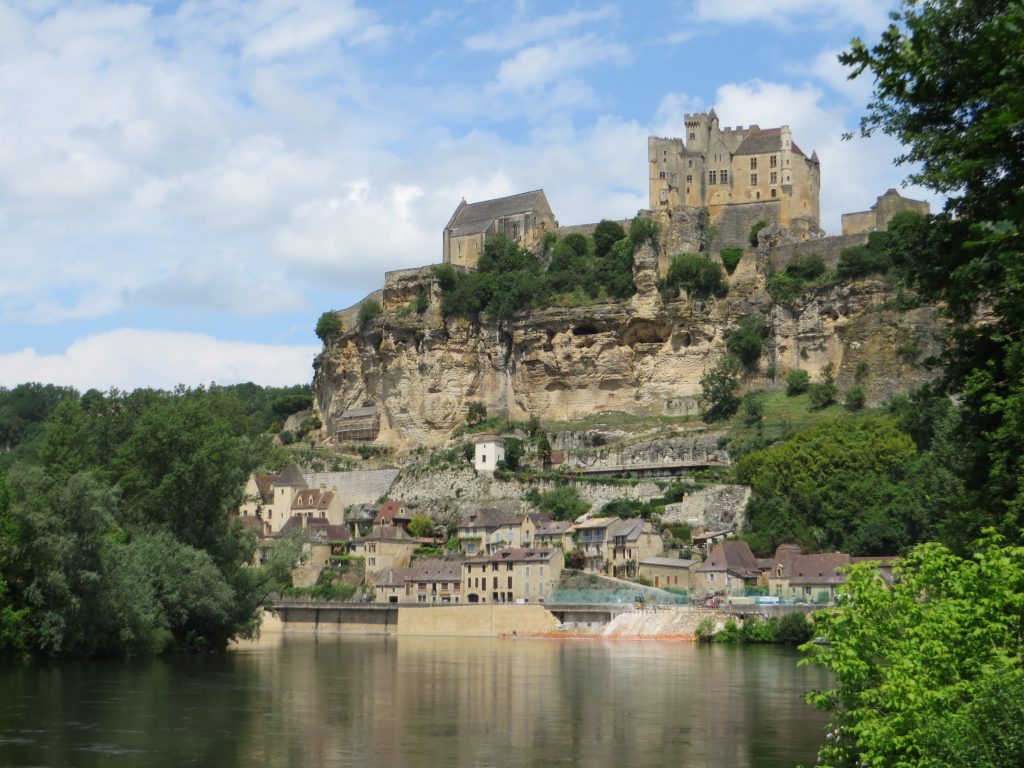
Beynac
Legend has it that, when distributing castles to regions across the world, the Lord accidentally spilled his sack over the Périgord, bestowing it with an abundance of these fortifications.
To truly immerse yourself in the charm of these picturesque Périgord and Quercy villages, the best way is undoubtedly by embarking on a river journey. You can opt for a leisurely boat excursion, boarding one of the many gabarres for an hour-long cruise, or choose to rent a canoe in Vitrac and paddle downstream for 5 km to reach Beynac et Cazenac. Whichever option you select, you will be treated to the sight of delightful villages nestled amidst the lush greenery of ancient forests, alongside dreamy castles and towering cliffs overlooking the meandering river.
La Roque Gageac, the Gem of Périgord
La Roque Gageac holds a prestigious position on the list of the most beautiful villages in France, alongside Beynac and Castelnaud.
Nestled between the river and towering cliff rocks, this village showcases a unique and remarkable architectural layout that expands vertically. The scarcity of space in the village has resulted in a plethora of dwellings carved and constructed into the rock, seamlessly blending in with the natural landscape. Some of these dwellings have even been claimed by nature, with lush vegetation adorning structures like the Manoir de Tarde, where climbing ivy creates a dense cloak of greenery.
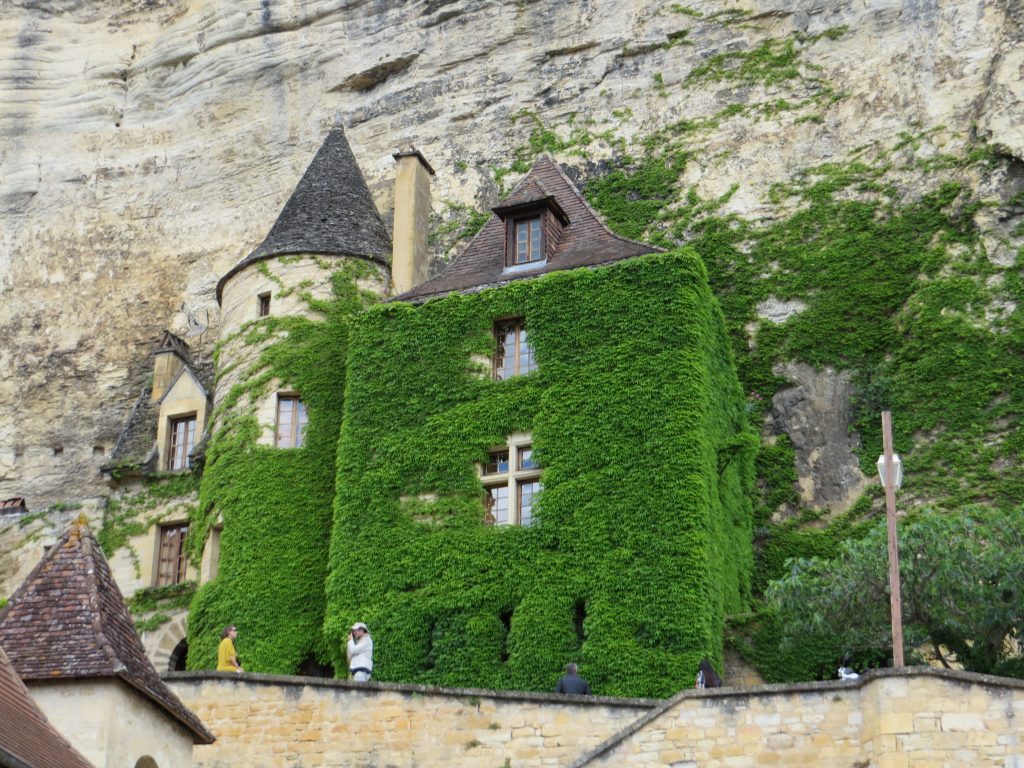
Benefiting from its southern exposure in close proximity to the cliff, La Roque Gageac enjoys a mild microclimate that graces the area with relatively warm temperatures throughout the year. This favorable climate fosters the growth of various exotic plant species, contributing to the lush and vibrant gardens that greet visitors as they traverse the balcony path leading from the car park into the heart of the village.
In close proximity to La Roque Gageac lies the splendid Château des Milandes, known for its association with the renowned entertainer Josephine Baker.
Pilgrimages, Legends, and Mysteries of Rocamadour
“Lous oustals sul riou, las gleisas sus oustals, lous rocs sus las gleisas, lou castel sul roc” or “The houses on the river, the churches on the houses, the rocks on the churches, the castle on the rocks”
This old poetic description perfectly captures the architectural marvels that await you in this remarkable village nestled in the Quercy region. Perched on a cliff face towering 150 meters above the Alzou valley, Rocamadour appears suspended between the heavens and the earth.
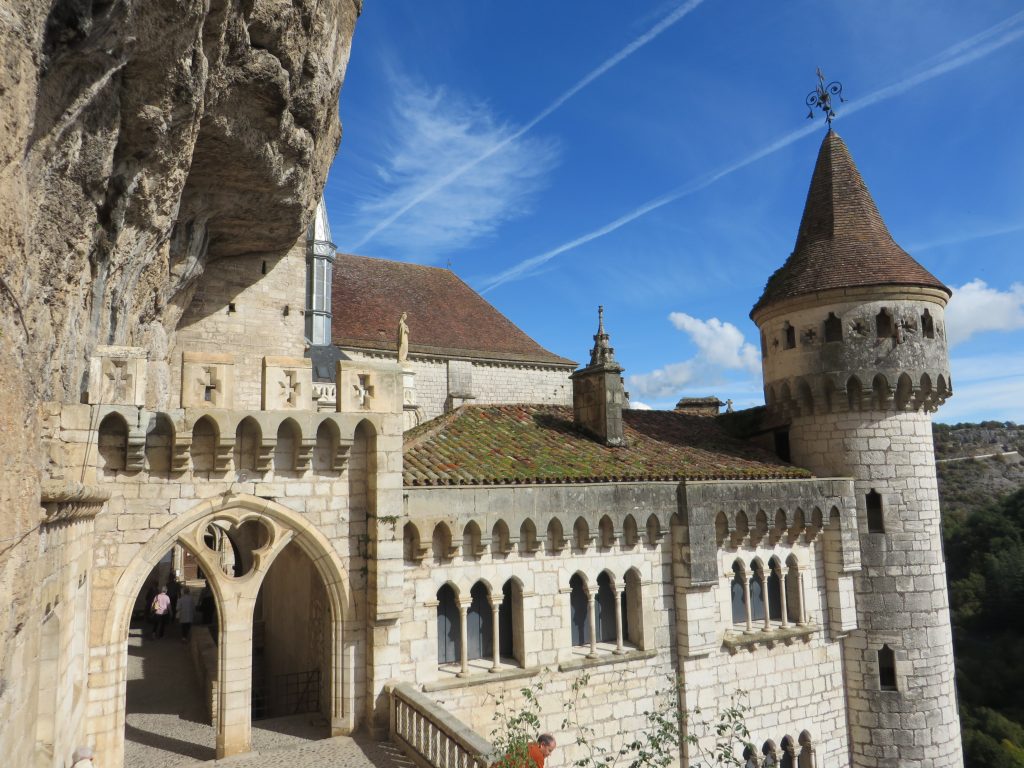
Rocamadour
To truly appreciate the accuracy of this saying, it is recommended to seek out a vantage point that offers a panoramic view of the village. I suggest parking your car near the hamlet of l’Hospitalet, approximately 1 km from Rocamadour, and visiting the belvedere opposite the hotel of the same name. From here, you can embark on a leisurely stroll along the sacred pilgrims’ path known as the Voie Sainte.
Rocamadour which held a significant place along the revered Way of Compostela pilgrimage route during the middle ages, holds numerous legends within its ancient walls.
One such legend unfolds in the 12th century, when a burial ground was unearthed, revealing a remarkably preserved mummified body.
Imagine the astonishment and reverence that filled the hearts of the villagers as they gazed upon this enigmatic figure. They believed it to be the remains of a hermit, a holy man who sought solace in the depths of one of the caves nestled beneath the majestic rock. In homage to this revered hermit, the village was renamed “Roc Amadour,” which translates to “lover of the rock” in the Occitan language.
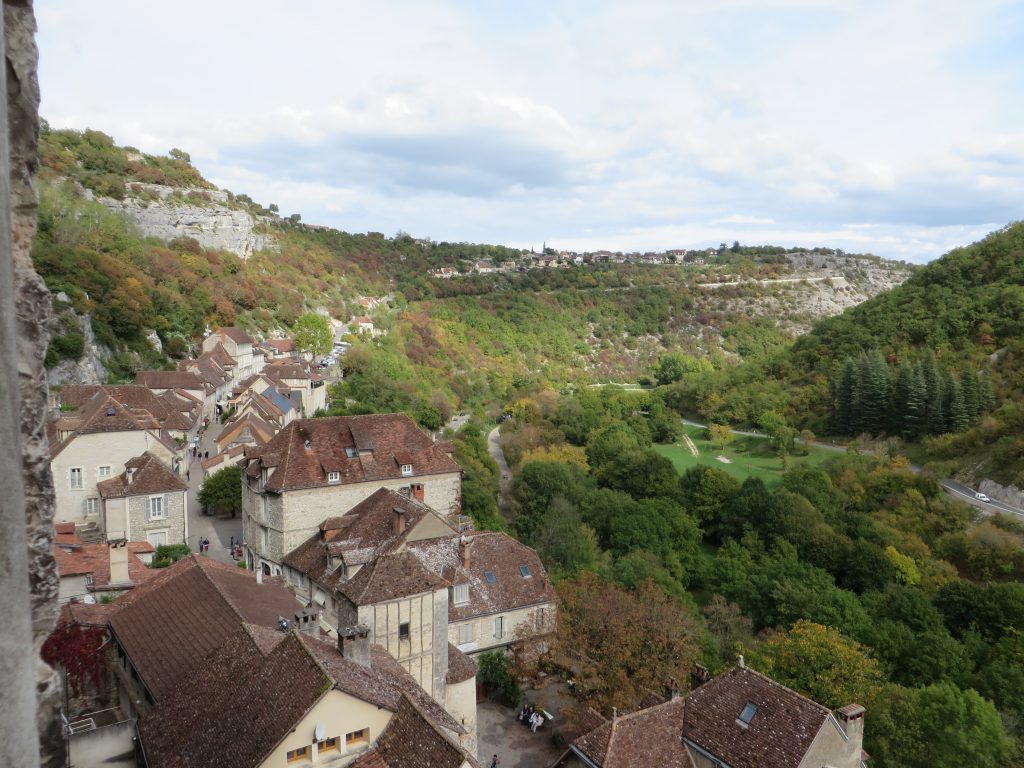
Rocamadour
The Black Virgin
This captivating legend adds to the mystique and spiritual aura that pervades Rocamadour. It reminds us of the profound devotion and the intertwining of human and natural elements that shape the village’s identity. As you wander through its historic streets, you’ll sense the presence of centuries past, feeling the echoes of pilgrims who walked these very paths in their quest for spiritual enlightenment.
However, Rocamadour gained its greatest renown through the veneration of the wooden statue of the Black Virgin. The miraculous occurrences attributed to the Black Virgin, often signaled by the tolling of the church bells, elevated Rocamadour to one of the most significant pilgrimage destinations in Europe until the 14th century.
Embarking on the Voie Sainte from the hamlet of Hospitalet allows you to follow in the footsteps of the pilgrims who have made this sacred journey throughout the ages.
A stroll through Rocamadour
The pathway leading to the village offers splendid viewpoints that showcase the picturesque landscape shaped by eroded rocks and lush vegetation, with oaks, chestnut trees, and fruit trees painting a vibrant tapestry.
As you pass through the fortifications and enter the lower town, you’ll find yourself immersed in a charming street adorned with shops and boutiques, tempting you with regional specialties.
While you may want to indulge in these delights I must gently suggest exercising a touch of patience. For now, it is time to prepare yourself both spiritually and physically for the ascent that lies ahead—the path that will lead you to the sacred Religious City, where the revered statue of the Black Madonna holds a profound presence. So, resist the immediate temptations that surround you, for the treasures of the lower town will patiently await your return.
The ascent begins with a monumental staircase of approximately 220 steps, a symbolic path that has been trodden by countless pilgrims seeking penance or miracles. In the past, pilgrims would climb these steps on their knees, bound by the chain of devotion around their necks. Arriving at the churchyard, their fervent devotion would be rewarded with the traditional “sportella” or medal of the Virgin of Rocamadour. Today, you can acquire this sacred memento in the shop opposite the church, allowing you to carry a piece of Rocamadour’s spiritual legacy with you.
If you prefer a more convenient way to ascend, fear not. Next to the Best Western Hotel, a lift awaits to whisk you effortlessly to the summit for a small fee, ensuring a painless journey without sacrificing the awe-inspiring experience.
The sword in the stone
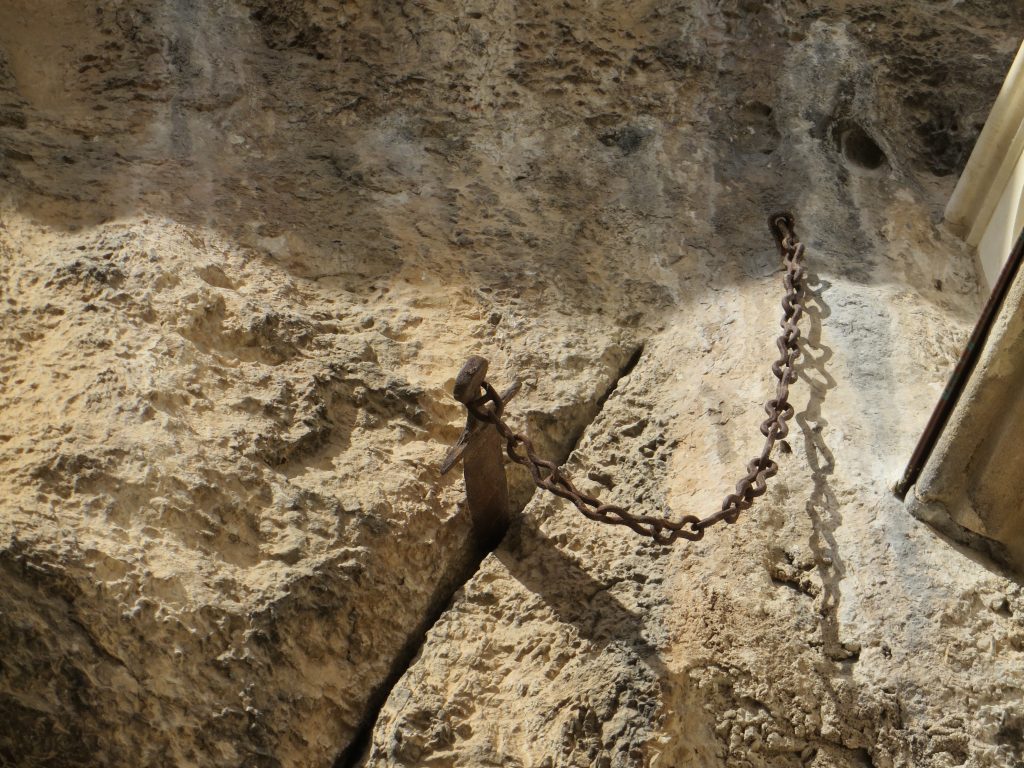
The sword in the stone
Before entering the Notre Dame chapel, take a moment to look up and behold a fascinating sight—a sword embedded in the rock. Legend has it that this sword is none other than Durlindana, the renowned weapon of the paladin Orlando. To conclude your visit on a truly sublime note, I highly recommend accessing the patrol path from the castle.
In the depths of the earth, the Gouffre de Padirac
What would you have done if you had lived three or four centuries ago and, walking in the open countryside, you suddenly found yourself on the edge of a huge circular abyss about 35 metres in diameter and seemingly bottomless?
Probably the same thing the inhabitants of Padirac did at that time: you would have thought it was the gateway to the underworld and would have invented a great number of legends about it.
It was not until July 1889 that the Gouffre de Padirac became a tourist attraction, when speleologist Edouard-Alfred Martel carried out his first explorations. In November of the same year, the site opened to the public.
Located 8 km from Rocamadour, the Gouffre de Padirac is a dizzying natural cavity 103 metres deep, formed by the collapse of the vault of a cave.
Visitors, after an initial descent by lift, walk to the landing stage for a trip along the underground river. The transparency of the water is such that one gets the impression that the boat is suspended in the void. After about a 10-minute boat ride, the tour continues on foot through what is, in effect, a phantasmagoria of formations of the most diverse shapes. The most famous is undoubtedly the Grande Pendeloque, a 60-metre stalactite that towers above the Lac de la Pluie.
Caution! In summer as in winter, the temperature inside the cave is constant: 13°C. Take a jumper with you, you will not regret it.
It is also advisable, especially in high season, to book in advance online. Here is the link :
Bergerac, Capital of Périgord Pourpre
Situated on the banks of the Dordogne River and surrounded by verdant hills adorned with vineyards, Bergerac proudly holds the title of the capital of Périgord Pourpre.
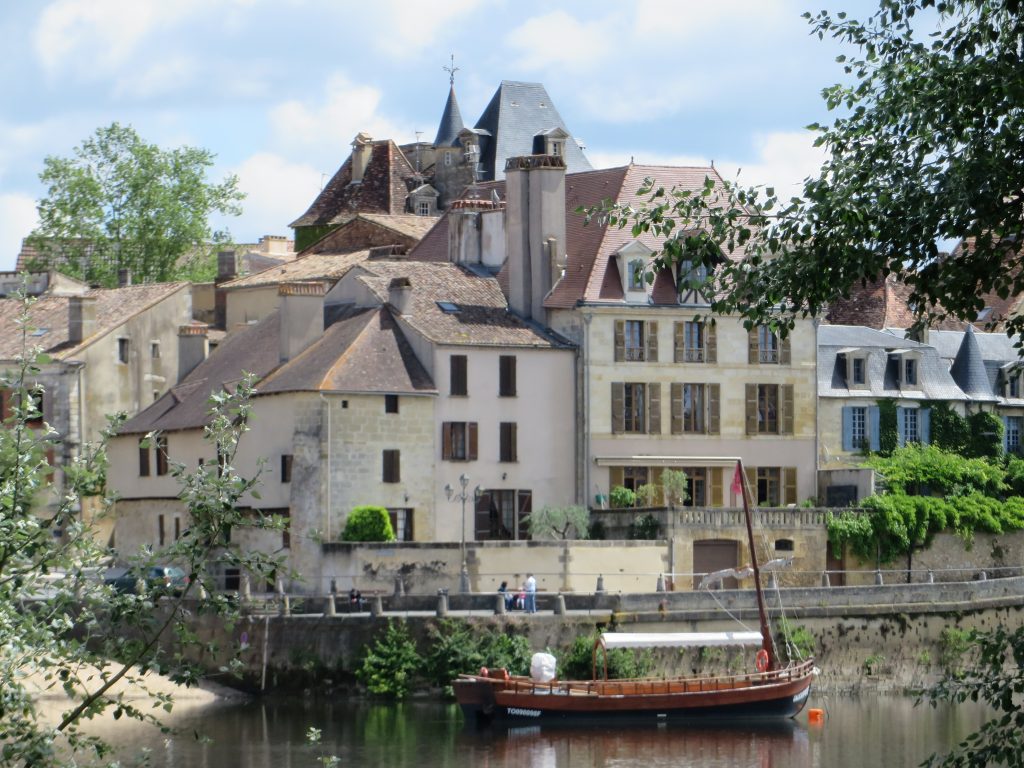
I recommend commencing your visit from the southern bank of the Dordogne, which is connected to the city centre by the Vieux Pont (Old Bridge). This vantage point offers a breathtaking view of the medieval and Renaissance buildings that grace the city. In the distance, the neo-Gothic bell tower of Notre-Dame Church stands tall, while on the opposite side of the river, the old port serves as a reminder of Bergerac’s historical prominence as a bustling trade hub. Even today, it is not uncommon to spot traditional boats known as gabarres, which were once used to transport the region’s exquisite wines across Europe.
As you venture into the historic centre, you will find yourself meandering through a labyrinth of narrow streets adorned with houses featuring exposed beams and sloping roofs, charming floral squares, and numerous shops offering souvenirs and local products.
Cyrano de Bergerac
Arriving at Place Pelissière, you will encounter the statue of the renowned Cyrano, the fictional character who inspired Edmond Rostand’s play. However, it is worth noting that the real Cyrano likely never set foot in Bergerac, much to the disappointment of many. Nonetheless, this detail has not deterred the city from adopting Cyrano as its emblem and erecting another statue in his honour at Place de la Mirpe.
A splendid 17th-century palace, built around the Cloister des Récollets, is home to the Maison des vins de Bergerac. Here, you can embark on an olfactory and tactile tour, indulge in wine tastings, and during the peak season, have the opportunity to meet passionate winemakers eager to share the secrets of their craft.
When to Plan Your Visit to Périgord:
The ideal time to explore Périgord is from June to mid-October, with July and August being the least rainy months.
In conclusion, Périgord and Quercy offer the perfect setting for slow holidays in France’s most beautiful villages. With their rich history, culinary delights, and associations with Cyrano de Bergerac and the Cro-Magnon era, these regions have much to offer beyond initial impressions. From exploring majestic castles and meandering along serene rivers to delving into enchanting caves and wandering through lush gardens, the allure of Périgord and Quercy is irresistible. Immerse yourself in a thousand years of history and indulge in the leisurely pace of life as you create cherished memories in these captivating destinations. Experience the essence of slow holidays in the picturesque villages of Périgord and Quercy, where time stands still and the beauty of France unfolds at every turn.
And if France has captured your heart, why not continue your journey to another region? Any ideas? Voilà:




No responses yet